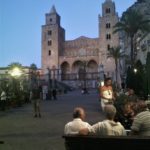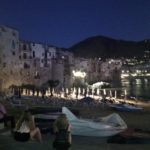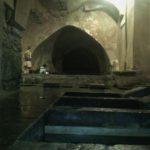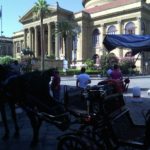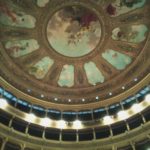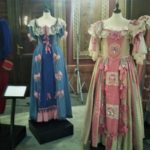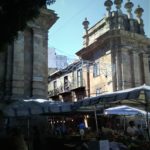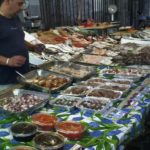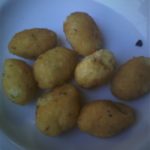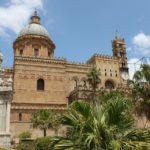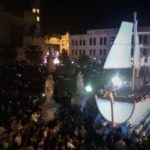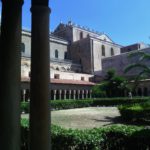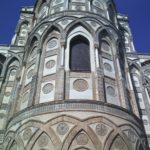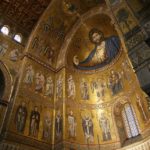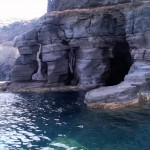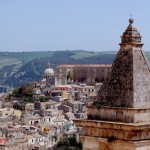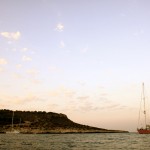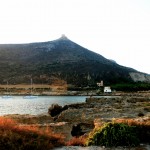The most south-eastern island in Italy
The Arab-Norman itinerary in Sicily
Visit Cefalù, Monreale and Palermo in a different light, according to UNESCO
In 2015 the UNESCO Committee declared the Arab-Norman itinerary in Sicily “UNESCO World Heritage site”… An itinerary that allows you to visit Cefalù, Palermo and Monreale in a different light. For the last two years I’ve been thinking to visit Palermo to get this itinerary done and I got the occasion during the last St. Rosalia Celebrations (taking place every year in July n.d.a.), invited by a friend of mine, Toti. The celebrations started at Palazzo Asmundo, in front of the stunning Palermo Cathedral, one of the symbols of this itinerary. Toti is a great storyteller and he explained me that the celebrations of St Rosalia are really popular in Palermo, happening for 393 years long and involving all the citizens. Definitely the best opportunity to see the city in such a unique way!
July 13th, I landed in Palermo in the early afternoon. I got to the city centre by bus, fast and cheap. The desk to buy the tickets is near the arrivals and easily recognizable. In 40 minutes I arrived at Palermo Central Station and I got the train exchange to Cefalù. The regional train was comfortable with air conditioning and electrical outlets to charge my phone. I could relax and watch all the people travelling on this route… A melting pot, I’d say: some people were clearly coming back home after finishing their work shifts, some other were carrying portable-coolers and big umbrellas to go sunbathing at the beach, but I noticed there were no tourists. The girl next to me (looking a little bit shocked to meet a tourist on the regional train connecting Palermo to Sant’Agata!) asked me where I was going… I explained her that my final destination was the Cathedral of Cefalù and I heard a voice coming from the seats behind me: someone recommended me to stop in Cefalù to see the Sunset! Suddenly a group conversation got started, about all the places along the Sicilian coast that ones simply can’t miss!
One day in Cefalù
50 minutes after my train got to Cefalù. I got off the train after a warm goodbye with all my travel friends, the same as we were a group of old friends! From the station to the Cathedral it is 10 minutes walking, a nice walk through the ancient historical village. The Cathedral of Cefalù is massive, legend has it that it has been built by Ruggero II after he survived a storm… Actually the structure with two lateral towers reminds me of a fortress. Inside the Cathedral the impact was extraordinary: the central aisle is simple, but with a great play of colors of the limestone. At the bottom, above the altar, the famous Byzantine golden mosaics. The cathedral is so big that was still deeply silent and powerful, even if there were several people inside, visiting.
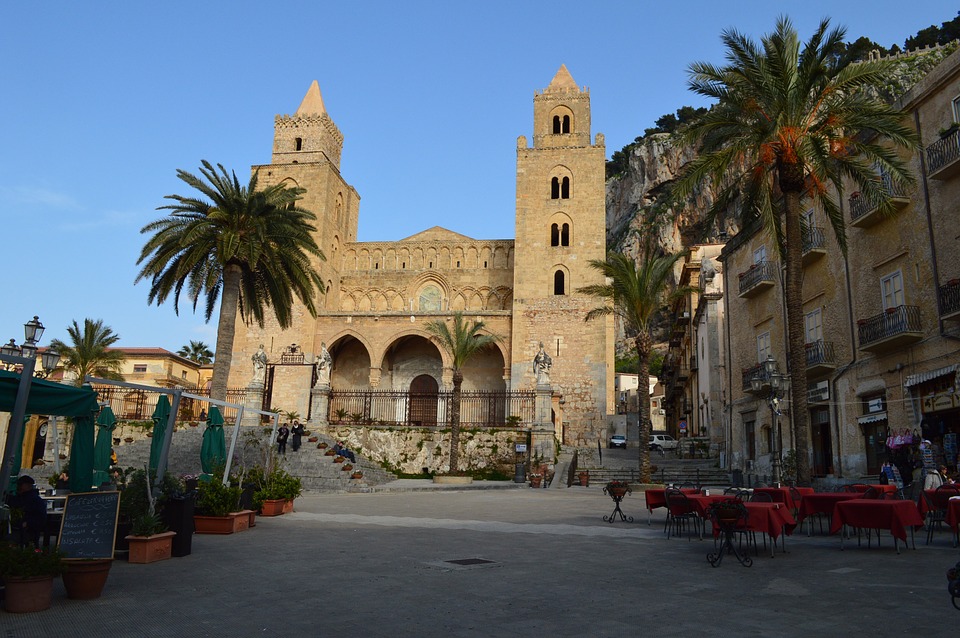
Cefalu Cathedral
I stuck there, contemplating the works of men for so long, until the cathedral closed at 6.30 p.m. I got out and I walked through the church yard, noticing how wide and elevated is it, compared to the road level. By the time of the construction, it had a specific purpose: in the past the church yard used to be a cemetery and the soil for the embankments came directly from Jerusalem! Both for religious reasons and for its particular composition, able to mummify quickly the bodies buried in there. I finally sat on a bench of the square to admire the front of the cathedral enlightened by the red lights of the sunset. Such a view! One hour after, blessed by this warm light, the one I considered a cliff impending on the church, now I feel like it lays there to protect the place.
- Cefalu Cathedral
- Cefalu by night
- Cefalu, Middle-Age Washtube
I spent few hours in Cefalù walking through the historical village and I recommend everyone to visit this charming place: the Middle-age washtub built on the river, the Pescara door, the old pier. When I spotted Venus appearing in the sky, I realized I had to take a train back to Palermo at 11 p.m.! Ready for the day-after intense tour!
One day in Palermo
Day two of my tour, Palermo. I met Barbara, our Sicilian guide, and other friends in front of the Teatro Massimo. The Theatre has nothing to do with the Arabic-Norman itinerary, but it is a central reference point to meet and it worth a visit! A great work of art, for sure, realized at the end of 1800 with more than 7000 mq of surface and 1380 seats. It has a 52 mt deep stage and several craft workshops inside. Our guide explained us proudly that the Teatro Massimo of Palermo reaches easily its economical goal, through a rich calendar of national and international representations, with 350 people working. I can’t say if is it mostly the Arabic spirit or the Norman one, but I have to admit that when the people from Palermo apply themselves to do great thing, they always succeed… You know, the Teatro Massimo happens to be the biggest lyric Theatre in Italy and the third in Europe, after Paris and Wien!
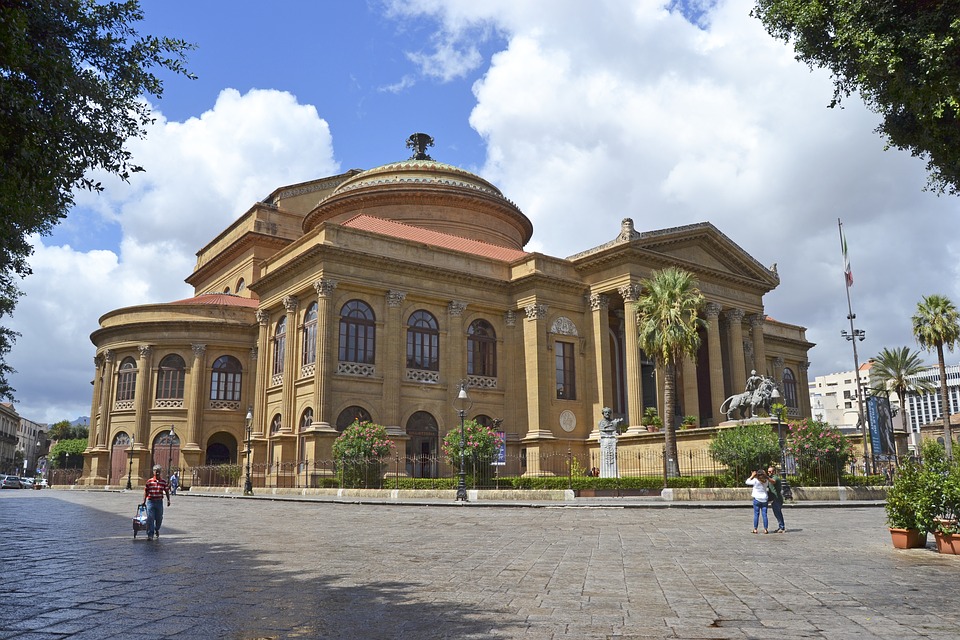
Palermo, Teatro Massimo
I strongly recommend you all to take a guided tour, not only to admire the beautiful building in liberty style or the great theater clothes collection designed by Zeffirelli, Guttuso and Sironi, but mostly for the passion that the foundation’s guide put in telling the history of this place. Would you like to know a trick to see a pièce from the Royalty Stage with no increasing ticket fee? That is exactly the reason why you should get a guided tour… It is a secret only an expert guide can share! You know, the Royalty Stage is located at the centre of the second order of stages: it cunts 27 seats and a private foyer called Parlor of the sovereign. It is fully coated in mahogany and furnished with sofas and armchairs of red brocade where (on a minimum 7 days booking) it is possible to have an exclusive brunch with friends.
- Palermo, Theatre
- Palermo, Cupola del Teatro
- Palermo, costumes
The Arab-Norman Palermo
Our Arab-Norman tour started at 10.30 a.m. To a proper settling on that era, Barbara – our guide – led us through the historic Del Capo Market, entering by the Carini Gate… The market is more than 1000 years old, born as a food market of Muslim curtains, today it is still a market where you can find local food and get in the Palermitan atmosphere. The smell of the exposed fruits and vegetables is impressing, that confirms the authenticity and the freshness of the products. Touristy at all, it is a real market where local people go shopping, looking for quality and freshness of the products, but even sociability. Walking through the alleys, from their stalls the traders spread words of popular wisdom and grandma’s recipes to entertain the clients and encourage them to buy. Here you can find not only fresh food, but also cooked food, ready to eat. The most authentic and high quality street food. The walk is long, but full of details to notice to better understand the spirit of the place.
- Market scene
- Market, food ready to eat
- Market, cazzilli
Slowly we arrived to the Cathedral, but as time was cruel, we decided to go straight to the Normans Palace. Dating back to Phoenician times, the palace was built on a serie of big polygonal rocks, but it boosted during the Norman time. The Palatine Chapel was built by the time of Ruggero II and – according to the official website – it “(…) is the pearl of religions and cultures in the history.” Inside, I was impressed by the Byzantine golden mosaics on all the walls and the altar representing both the old and the new Testament. Looking closer, I realized that it is not just a religious place, but also a place where the Norman kings were keeping trial: the altar on one side, the royal seat on the opposite… Above the royal seat, the God’s seat… Temporal and religious powers in the very same place, a meeting of different religions and cultures including Byzantine, Islamic and Latin workforce. Two different ways to devise the divine: the Muslim one, representing the divine through simple and symmetric figures, repeated as the symbol of eternal life; and the Byzantine one, focusing on some precise scenes taken both from the ancient and new testament, representing God’s son.
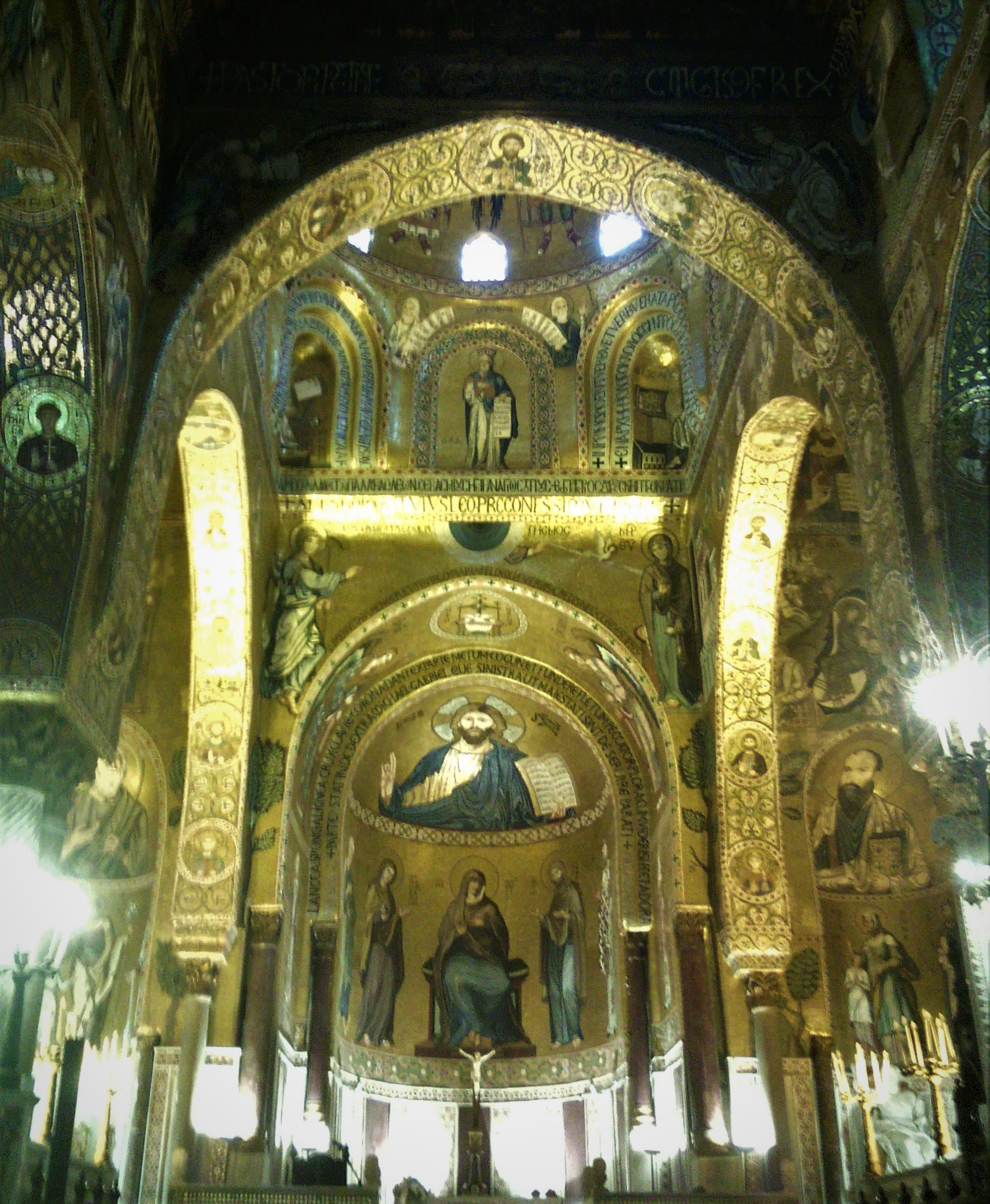
Cappella Palatina
Visiting the upper Palace is allowed from Friday to Monday (even if it is the location of Sicilian regional assembly). You can also visit Ruggero II’s room, whose mosaics decoration represents scenes and emblems of the Norman power, through a symbolic narration of the garden-paradise from the Islamic tradition. In the nearby, the St John of the hermits church: a Romanic church reminding to some Oriental buildings (see the red domes). The church was built above the Kemonia river and it is surrounded by a wild garden with plants coming from the whole Mediterranean. A fresh and silent place, even if it lays in the very centre of the city, where you can enjoy some peace before getting back to the loudy market. At 2 p.m. we had lunch tasting some great typical street-food from Palermo: arancini, cazzilli, panelle, unzone and caponata.
St Rosalia celebration!
After the lunch break, I decided to take some rest at the hotel before St Rosalia celebrations. The Arab-Norman itinerary would include also the Cathedral and the Castle of Zisa, but a long party night was waiting me… Later that day I met my brand new friends in front of the Cathedral, to see the streets of Palermo getting ready for the celebrations. The symbols of the party are little crowns and street foods. Today, the little crown unites the “commoner” Palermitan women to the high society ones… The street food is a pleasure to enjoy all together as well, no class distinction.
The celebration represents the popular scene of Palermo healed from the pest plague of 1624, a street show from 9 p.m. to 2 in the morning, with some steps: with some steps: Vittorio Emanuele bvd, the Norman Palace of course, the avenues till St Felice Gate. Acrobats, actors, light effects, water & fire plays… Every square hosts a scene, each connected to the others through a long parade of people, preceding and following the Saint’s icon. Still not a religious procession (taking place the next morning, FYI), just a festy parade of people, led by the Mayor with a group of civil authorities and a religious group including the Bishop of Palermo. Everyone is involved in a hellish crowd with sweat, cries and joy screams…
- Cathedral of Palermo
- St Rosalia Celebrations, the boat waiting
- St Rosalia Celebrations, people and the boat
I followed the parade until its first stop, then I decided to join a private party inside the Asmundo Palace. From the balcony, I was at just few meters from the statue of the Saint, placed in a boat, and I could see the crowd preceding and following the cart. It seemed like a never ending queue, I heard that about 200k people joined the celebration in the area between the square and the garden, its first time in the Norman Palace.
Like I said, Asmudo Palace is on the very same square of the Cathedral and it gets opened during special occasions, for private parties, public events or exhibitions (as this one, i.e.). A good way to keep the Palace alive, together with its precious collection of weapons, porcelains, geographic maps, ancient sigils and carriages… but you can visit the museum almost every day (except in August). Meanwhile, the cart of the Saint had reached San Felice Gate and the party was moving to Marina, where at 1.30 in the morning started the closing fireworks.
One day in Monreale
The day after at 9 a.m. our group moved to Monreale through the Conca d’Oro (i.e. Golden Basin), a valley so called in the past because of the oranges groves, now replaced by some ugly uncontrolled constructions occurred during the ’70s and ’80s.
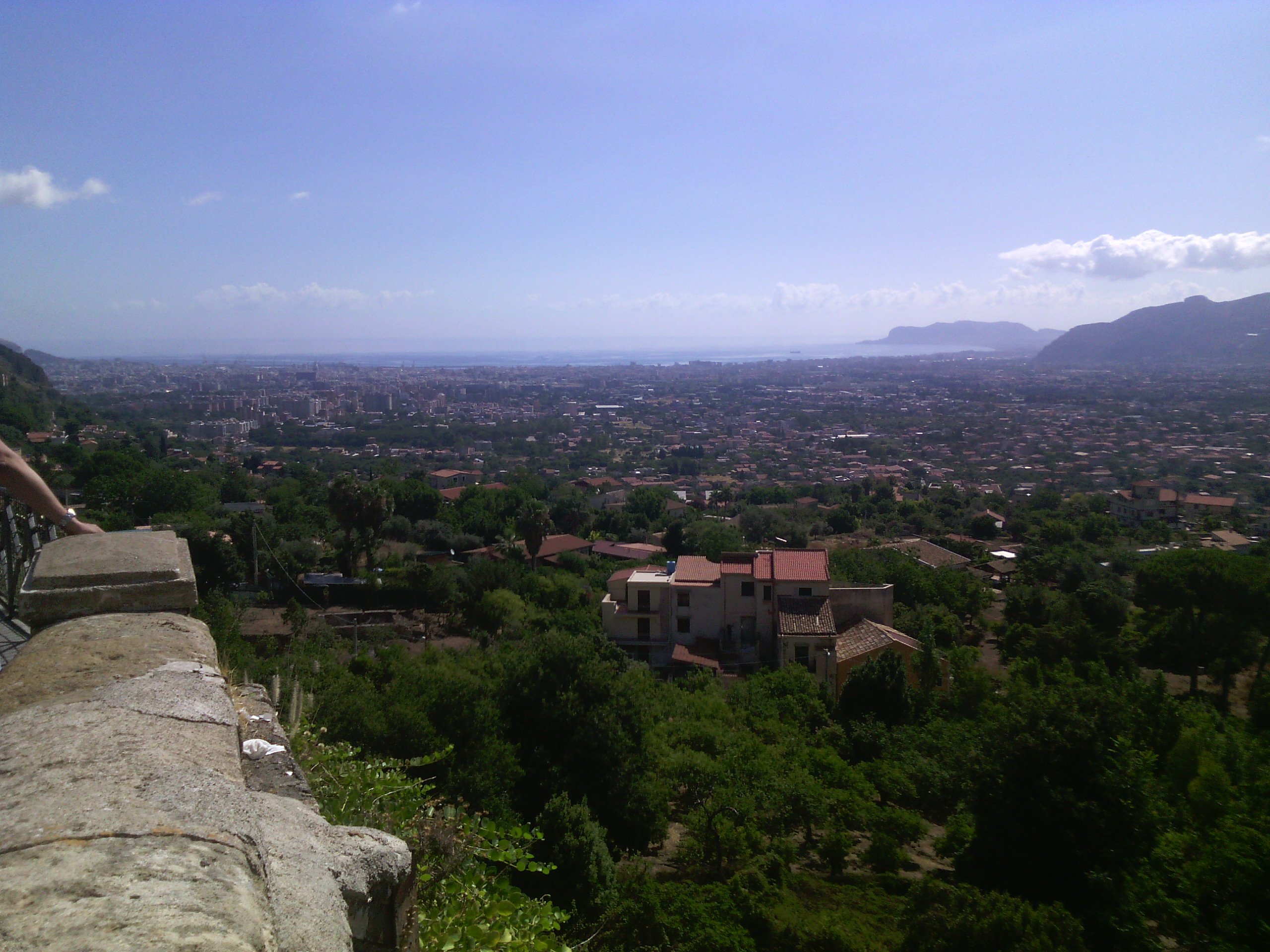
Once there, first we took a glance on the whole city from the panoramic terrace behind the Cathedral. Then we entered the main gate and we walked through the old village whose alleys remind the medine of some Arabic city. Not easy to describe your feeling inside the Cathedral, one of the most solemn monuments in the whole Norman architecture. The structure reminded me the first Cathedral I visited in Cefalù, but this one is full covered in golden mosaics on a surface of 6k mq, what a magnificence, I’d say! Looking closer at the details, the Cathedral reflects different styles and cultures, finding some common elements of spirituality.
- Monreale, the church outside
- Monreale
- Monreale, inside the church
Comparing the two cathedrals, Monreale and Palermo, they seem some kind of self-celebration challenge between their patrons William II and the Bishop of Familiar. William II focused more on the interior embellishment – remember the golden mosaics? – as a metaphor of a human being caring more about his soul than the outward appearance… The Bishop, on the contrary, cared more about the outside, to get people’s attention. The first one supported the evangelical message between the lower social classes through the frescoes and the mosaics; the second enhanced the power of the Church through the architecture, replacing the old Mosque. Inside the Cathedral here in Monreale, Barbara – the guide – explained us all the different scenes on the walls and their meanings. On the central nave the figures are from the New Testament (as it was some kind of educational graphic-novel), while behind the altar the history of Jesus Christ’s life.
I highly recommend to travel along the Arab-Norman UNESCO itinerary, to enjoy this amazing mix of cultures and religions, expressed through the architecture. One more detail: this fusion is also in the road signs, written in three languages, Arabian, Jewish and Italian! That reflects the nature of everyone here in Palermo, always ready to give, exchange and receive… even on a regular regional train leading to Cefalù…
Visit Palermo: helpful hints
Arrival
Palermo has its own international airport connected to the city centre by a bus (rides every 30 minute, many stops in different part of the city, 6€). For transcontinental flights you have to stop in other airports (Rome, for example).
Transports
The best way to visit Palermo is on foot. About the public transports, in Palermo you can pick both bus and tram: single ticket 1,4€ for 90 minute ride.
What to do
Palermo is the capital city of the region Sicily, a big island in the South of Italy. The long history of the city and the succession of many different civilizations gave it a remarkable artistic and architectural heritage. Italian Capital of Culture in 2018, Palermo is the main seat of the UNESCO World Heritage Site Arab-Norman Palermo and the Cathedral Churches of Cefalù and Monreale. Most of the must-see monuments is located inside the city center; others are distributed throughout the territory of Palermo: historic villas, watch towers, rock paintings, ancient churches or noble palaces. You really should attend the St. Rosalia Festival on Semptember 4th and July 15th, it is a very good experience.
In Sicily you will meet very nice people and you will taste very good food… Some tips about local street food: try some arancina (fried stuffed rice balls filled with ragù or cheese & peas), pani ca meusa (soft bread stuffed with chopped veal lung), pane e panelle (soft bread filled with fritters made from chickpea flour), cassata (ricotta cheese and candied fruit), the famous cannoli (tube-shaped shells of fried pastry dough, filled with a sweet, creamy filling usually containing ricotta cheese)… and so on and so forth. Visit Palermo’s food markets to taste the best local street food, they are called Vucciria and Ballarò.
Where to sleep
Choose carefully where to sleep. The best areas for tourists are the city centre, Kalsa and Mondello (on the seaside). We should recommend you to avoid some urban areas like Cuba, Zen, Brancaccio, Zisa, Falsomiele, Uditore and Cruillas.

